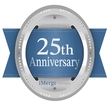What Metrics Should We Use to Assess the Productivity and Efficiency of Our Development Team?
In the high-stakes world of SaaS, where product velocity can make or break your competitive edge, measuring the productivity and efficiency of your development team isn’t just a matter of internal performance—it’s a strategic imperative. As Jason Lemkin, founder of SaaStr, puts it, “In SaaS, your product is your company.” And if your product team isn’t delivering, your valuation, customer retention, and acquisition strategy all suffer.
But here’s the challenge: traditional metrics like lines of code or hours worked are relics of a bygone era. Today’s SaaS leaders need a more nuanced, outcome-driven approach—one that aligns engineering output with business value, innovation, and long-term scalability.
Drawing on research from elite MBA programs (Harvard, Stanford, Wharton), insights from SaaS leaders, and data from firms like McKinsey and SaaS Capital, this article outlines the most effective metrics to assess development team performance—while also tying them to broader financial and strategic outcomes like acquisition readiness, ARR growth, and customer retention.
1. Velocity Metrics: Measuring Output Without Losing Sight of Value
Velocity is a staple in agile development, but it’s often misunderstood. Simply tracking story points completed per sprint can incentivize quantity over quality. Instead, elite SaaS companies use velocity in context:
- Cycle Time: Measures how long it takes for a task to move from “in progress” to “done.” Shorter cycle times indicate a more efficient pipeline. According to a Stanford GSB case study, companies with optimized cycle times saw 20–30% faster feature delivery without increasing headcount.
- Deployment Frequency: How often code is shipped to production. High-performing teams (as defined by the DORA metrics from Google’s DevOps Research) deploy multiple times per day, enabling rapid iteration and faster feedback loops.
- Lead Time for Changes: The time from code commit to production. This metric reflects both engineering efficiency and CI/CD maturity.
These metrics are especially valuable when preparing for a liquidity event. As explored in Due Diligence Checklist for Software (SaaS) Companies, acquirers increasingly scrutinize engineering throughput and release cadence to assess scalability and technical debt.
2. Quality Metrics: Balancing Speed with Stability
Speed without quality is a recipe for churn. According to McKinsey’s 2023 SaaS report, 60% of customer dissatisfaction stems from bugs or poor UX—issues that originate in development. To mitigate this, track:
- Change Failure Rate: The percentage of deployments that result in a rollback, hotfix, or incident. Elite teams keep this under 15%.
- Bug Rate in Production: Number of bugs reported post-release. This should trend downward over time, especially if you’re investing in automated testing and QA.
- Escaped Defects: Bugs that make it past QA into production. A high number signals process breakdowns and potential reputational risk.
These metrics also feed into valuation. As noted in Valuation Multiples for Software Companies, buyers discount companies with high technical debt or unstable codebases, often by 1–2x EBITDA.
3. Outcome Metrics: Aligning Engineering with Business Goals
Harvard Business School’s SaaS scaling frameworks emphasize the importance of tying engineering output to customer and revenue outcomes. Consider these:
- Feature Adoption Rate: What percentage of users engage with newly released features? This metric links development work to customer value and can inform roadmap prioritization.
- Customer-Reported Value: Use NPS surveys and customer interviews to assess whether new features solve real problems. This is a qualitative but powerful signal of product-market fit.
- Revenue Impact per Feature: Track how specific releases affect upsell, retention, or conversion. This is especially useful when evaluating acquisition ROI, as discussed in assessing the viability of potential acquisitions.
4. Innovation Metrics: Measuring What Moves the Needle
Innovation is the lifeblood of SaaS differentiation. Stanford’s innovation KPI framework suggests tracking:
- Percentage of Time Spent on New Initiatives: How much of your team’s capacity is allocated to innovation vs. maintenance? A healthy benchmark is 20–30%.
- Experimentation Velocity: Number of A/B tests or prototypes launched per quarter. This reflects a culture of learning and agility.
- Time to MVP: How quickly can your team deliver a minimum viable product for a new idea? This is critical for entering new markets or responding to competitors.
These metrics also influence acquisition appeal. As highlighted in SaaS Valuation Multiples: A Guide for Investors and Entrepreneurs, innovation velocity can justify higher revenue multiples, especially in AI, fintech, or vertical SaaS niches.
5. Team Health Metrics: Sustaining Long-Term Productivity
Burnout, turnover, and disengagement silently erode productivity. Wharton’s organizational behavior research shows that high-performing teams share three traits: psychological safety, autonomy, and purpose. To monitor this, track:
- Employee Net Promoter Score (eNPS): A leading indicator of morale and retention risk.
- Team Turnover Rate: High attrition often signals cultural or leadership issues that impact delivery.
- Sprint Predictability: How often does the team deliver what they committed to? Low predictability may indicate overcommitment or unclear priorities.
These metrics are especially relevant during M&A. As discussed in handling employee retention during the sale of a software business, acquirers often require retention plans for key engineers and will discount offers if team stability is in question.
6. Strategic Integration: Building a Unified KPI Dashboard
To operationalize these insights, consider building a KPI dashboard that integrates:
- Velocity + Quality: Cycle time, deployment frequency, change failure rate
- Business Impact: Feature adoption, revenue per feature, NPS
- Innovation: Time to MVP, experimentation rate
- Team Health: eNPS, turnover, sprint predictability
Tools like Linear, Jira, and GitHub Insights can automate much of this tracking. For strategic planning, overlay these metrics with financial KPIs like CAC, CLTV, and ARR growth to ensure alignment between engineering and business outcomes.
Conclusion: Metrics That Drive Value, Not Just Activity
Ultimately, the goal isn’t to micromanage developers—it’s to create a data-informed culture where engineering decisions drive measurable business value. Whether you’re scaling toward a $50M ARR milestone or preparing for a strategic exit, these metrics provide the clarity needed to optimize performance, reduce risk, and increase enterprise value.
Advisors like iMerge use these insights to guide SaaS founders through valuation modeling, due diligence, and exit planning. By aligning development KPIs with strategic goals, you not only improve internal efficiency—you also position your company for a premium outcome in the market.
Scaling fast or planning an exit? iMerge’s SaaS expertise can guide your next move—reach out today.



